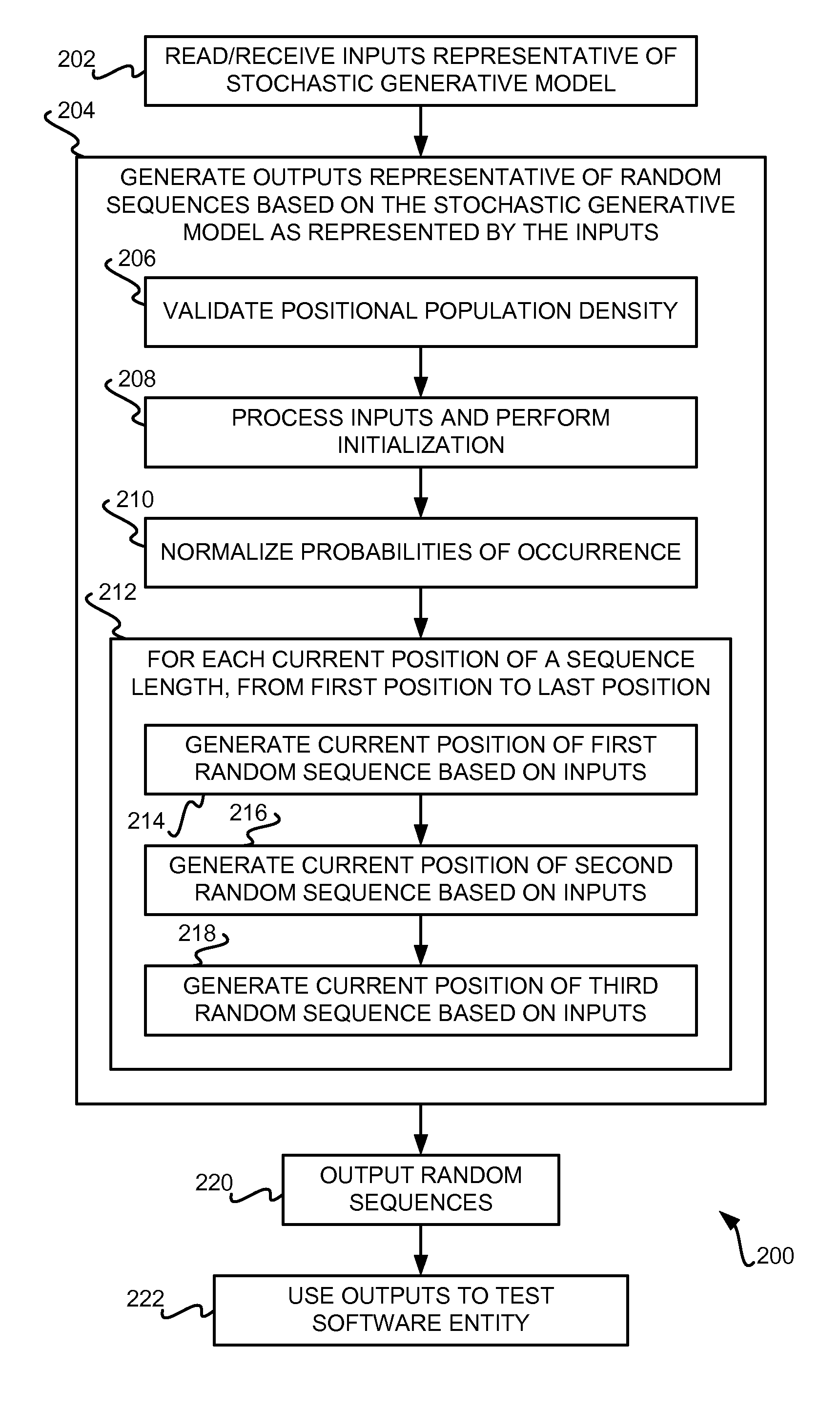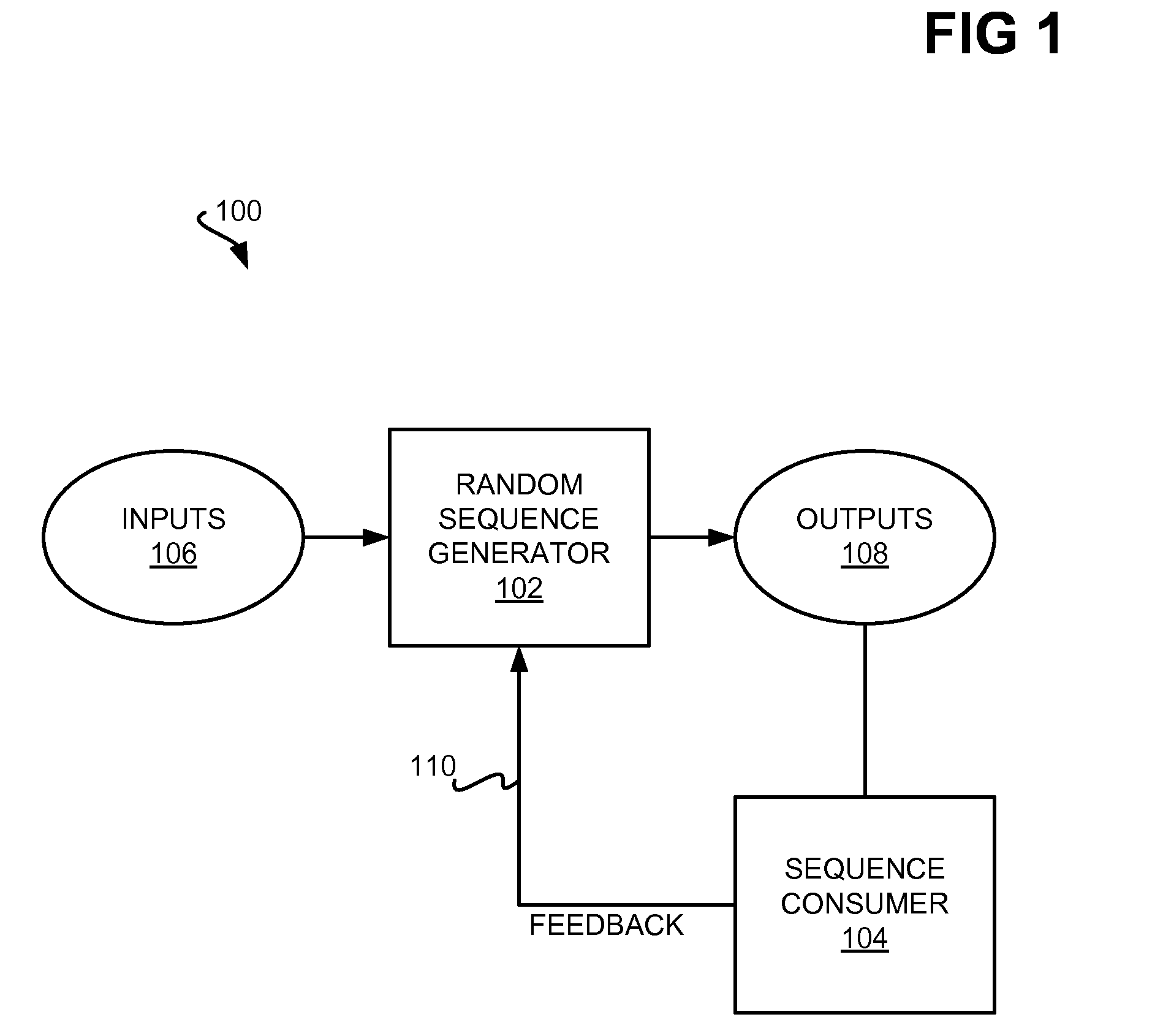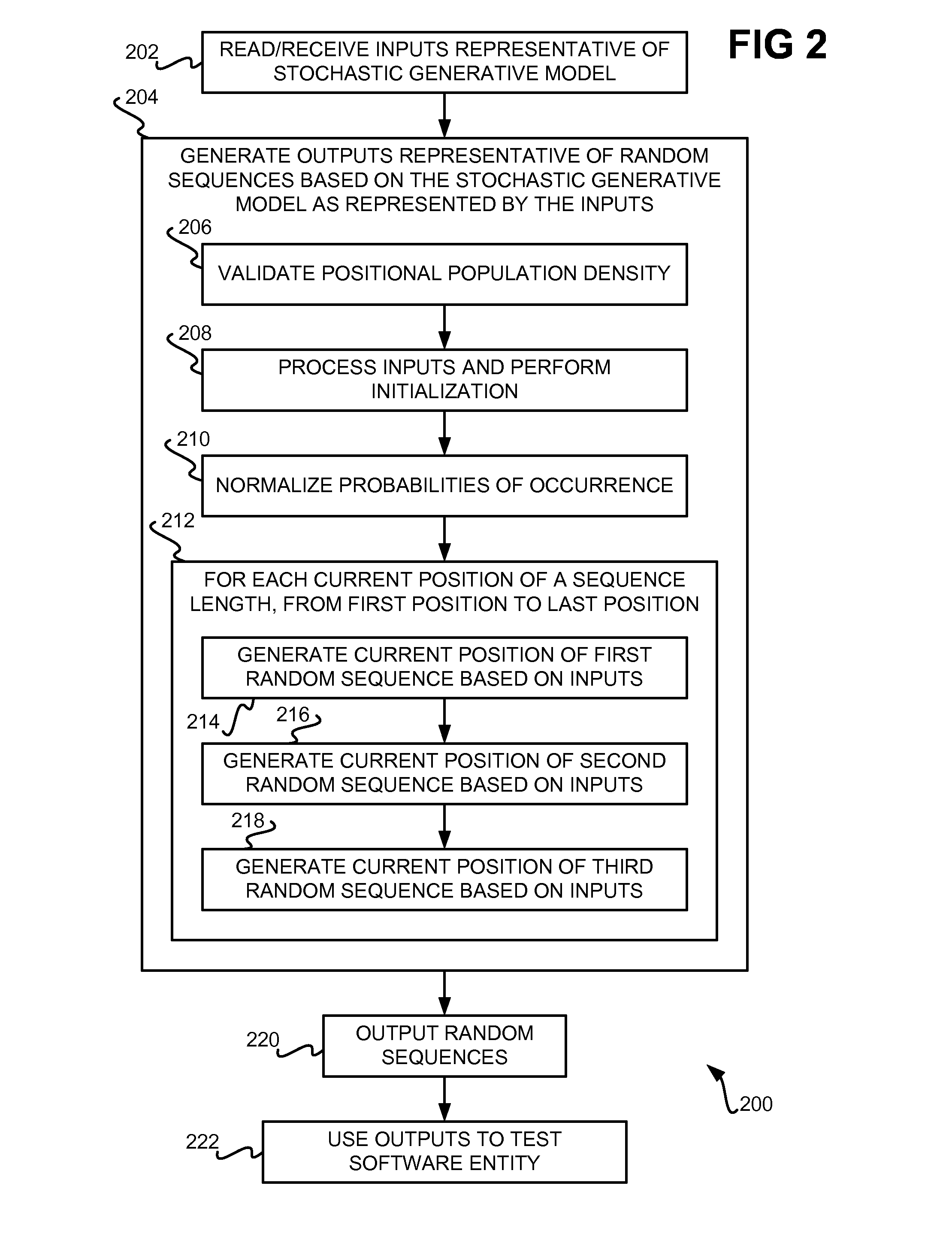Generating random sequences based on stochastic generative model having multiple random variates
a generative model and random sequence technology, applied in the direction of stochastic conversion, error detection/correction, instruments, etc., can solve the problems of difficult to achieve automatic generation of test cases and corresponding test data, generating random, stochastic, test cases, etc., and achieving the effect of generating random or stochastic test cases in practi
- Summary
- Abstract
- Description
- Claims
- Application Information
AI Technical Summary
Benefits of technology
Problems solved by technology
Method used
Image
Examples
Embodiment Construction
for Generating Random Sequences
[0053]In this section of the detailed description, detailed embodiments for generating random sequences using stochastic generative models are presented. In its simples form, a multivariate sequence generator ζ maps a random list of (from Ω) to S (from ξ), maps a random list of (from ψ) to N (from η), and maps a random list of (from λ) to V (from χ). The length of S, N, and V are the same, and the elements of S, N, and V form a sequence of tuples for the sequence consumer. The stochastic patterns in the resulting sequences S, N, and V are known a priori to the generator ζ, and are referred to as a stochastic generative model, or SGM, herein.
[0054]The SGM includes multiple random variables, such as X, Y, W, S, N, and V), by sampling from the respective random spaces (such as Ω, ψ, ξ, η, and χ) as described by an expected arbitrary probability, or EAD. The EAD are the embedded stochastic patterns in S, N, and V. The SGM can be incrementally construct...
PUM
 Login to View More
Login to View More Abstract
Description
Claims
Application Information
 Login to View More
Login to View More - R&D
- Intellectual Property
- Life Sciences
- Materials
- Tech Scout
- Unparalleled Data Quality
- Higher Quality Content
- 60% Fewer Hallucinations
Browse by: Latest US Patents, China's latest patents, Technical Efficacy Thesaurus, Application Domain, Technology Topic, Popular Technical Reports.
© 2025 PatSnap. All rights reserved.Legal|Privacy policy|Modern Slavery Act Transparency Statement|Sitemap|About US| Contact US: help@patsnap.com



